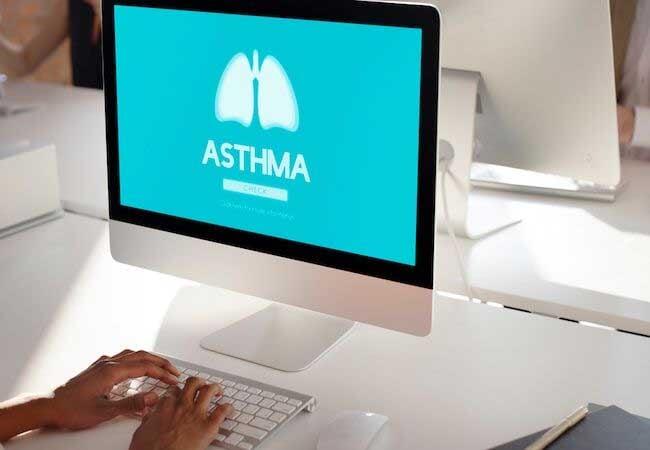Although spirometry has proven to be very useful for researching and keeping under control chronic diseases, such as asthma, this diagnostic tool is underutilized in many countries.
In this article we will highlight some of the many advantages of performing spirometry tests in patients with asthma. Along this text we will answer briefly the questions why?, how? and when?
Why?
Why?
Usually, a clinical evaluation of symptoms associated with asthma and their pattern of recurrence is enough to obtain a diagnosis. However, it is advisable to check the airway obstruction and its reversibility to confirm the initial diagnoses. I mean, an obstruction of more than 12% and a 200 ml increase in FEV1 after inhaling a bronchodilator are telltale signs.
In an accurate spirometry test, a reduced range from FEV1 to FVC indicates airway limitation. The diagnoses of obstruction, in general, is made using the prebronchodilator ratio of FEV1 to FVC, that is, when it shows a value less than the Lower Limit of Normal (LLN). As you know, the LLN is estimated by subtracting 1,645 times the standard deviation from the predicted value.
When the spirometry of a patient clinically diagnosed with asthma comes out normal it is necessary to look for an another diagnoses because it is likely that the first one is incorrect. Clearly, this simple and painless test is very valuable to prevent wrong and delayed treatments.
How? When?
How? When?
Variability of airway caliber (spontaneous or with treatment) is one of the characteristic symptoms of asthma. And this can be demonstrated without a doubt performig a spirometry test, whether the patient's results show noticeable improvement or deterioration.
To have a better idea of patient´s lung health it is advisable to perform several spirometry for a few days or weeks; this serves as a guide for confirming or dismissing the diagnoses of asthma. What is the recommended frequency? There is really no fixed parameter, that depends on each case and on what the doctor is looking for. The 2014 report of the Global Initiative for Asthma (GINA) suggests in a very broad way that the patient's lung function should be measured by spirometry as follows:
· When the diagnoses is made
· At the beginning of the treatment
· 3 to 6 months after asthma control begins
· Periodically
An increase or decrease in FEV1 of >12% and >200 mL helps document airway caliber variability and may be useful in patients who show no acute bronchodilator response.
Lung function is also an indicator of future risks of adverse events. A predicted FEV1 <60% is potentially an independent and modifiable risk factor for disease exacerbation. Performing a series of spirometry with periodically can help to identify timely the decline in the patient's lung function.
Accurate and reliable spirometry
Accurate and reliable spirometry
You will have already realized the multiple advantages that spirometry offers the pulmonologist (and especially the patient) to detect and treat asthma; however, this is overshadowed when these tests are not properly performed.
The British Guideline on the Management of Asthma points out the disadvantages of obtaining inaccurate results when spirometry are not carried out with a device of good quality that was properly calibrated, and performed by an operator who lacks adequate training.
Fortunately, you can count on our spirometer, SpiroScout, to perform accurate tests. It is an easy-to-use device comfortable for patients of all ages that uses disposable mouthpieces that prevent cross-contamination, and thanks to its ultrasonic technology, it is calibration-free.
Besides, it uses the LFx Software, which is an intuitive program that allows you to zoom-in into any part of the respiratory curve, and generates reports with modern and explanatory graphic elements. Therefore, this device it is the best option to take care of the lung health of your patients. For more information about SpiroScout, click here.
REFERENCES https://www.ncbi.nlm.nih.gov/pmc/articles/PMC4663874/
GINA https://ginasthma.org/wp-content/uploads/2019/01/2014-GINA.pdf



